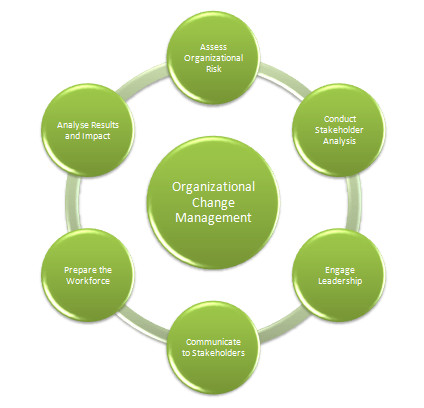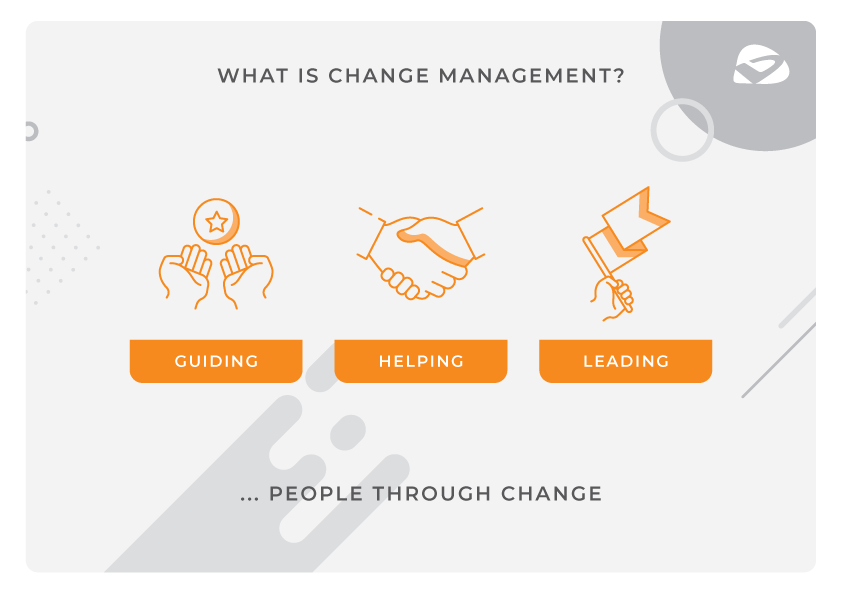Role of corporate managers in support of Organizational Change
Introduction: Role of corporate managers in support of Organizational Change
Native Assignment Help provides assignment help to assist students in research, writing and proofreading process.
Change is a fundamental necessity in the world of business and commerce. Businesses are constituted in organizations and companies, and changes in them are equally necessary to boost the production and manufacturing process. Change brings about positivity and productivity in the organisations which helps it to increase the brand value and revenue counts. Thus, it is no doubt that change is quite a primary factor in the organisational functioning, however, change that is brought in an organisation fundamentally requires to be managed and systemised. Change cannot be sporadic and spontaneous, and thus managing the change is necessary. A specific type of change management is thus present which brings about changes in organisations following patterns and steps, and is known as change management (Bansal, and King, 2022).
The primary importance of change management is that the system of management helps to provide the adoption of the new sets of rules and regulations by an organisation without any issues with great impetus and speed (Lewis, 2019). Changes, however, are not always welcomed in organisations and resistance is a common thing against changes this has also been the case in the UK-based retail company Tesco. Proper change management can combat the resistance coming against the desired changes and can track the essential modifications in an organisation. Management of changes brings about the employees of an organisation closer to each other which in turn provides a better background for teamwork. Managers who bring about changes in Tesco work for improving business performance and revenue generation, and prove their abilities as individuals, and that benefits organisations, for instance, Tesco identifies truly talented, skilled employees within the organisation. The importance of change management for Tesco is the increment of higher customer satisfaction through the changes that the retail company brought to its organizational structure.
Discussion
Organisational change is tremendous work on the behalf of all, especially the employees and the management. There are quite a lot of perspectives that are involved in the whole process of change management. Change management is a huge process involving quite a lot of people, perspective thus automatically varies tremendously. There are generally two different types of perspectives that are broadly divided, for instance, the individual and the organisational perspectives on the organisational changes. The first one, that is the individual perspective deals with the emotional and cognitive behavioural aspects an individual goes through while organisational changes take place. In this perspective, individuals are invited to undergo similar patterns of change that an organisation might be going to bring about holistic development (Stouten, Rousseau, and De Cremer, 2018). Tesco has experienced this, like any other retail shop, where individualistic perspectives towards organisational changes were faced. Another end of this broad spectrum of perspectives in organisational changes is the organisational perspective, which speaks about the perspective of the accumulated thoughts of all the perspectives that are emerging from the organisation itself in the prelude of changing.

Figure 1: Organisational Change
However, the perspectives of change management, especially in organisational change scenarios are of three approaches, namely the rational approach to change, the learning approach to changes, and the cognitive approach to change. The first one, that is the rational approach to change denotes the process change that is resulted after an extensive period of rational thinking. This process includes a lot of analytical and logical thinking, and from this perspective especially, the management of a company can take up future decisions (Stouten, Rousseau, and De Cremer, 2018). Tesco deployed this method to analytically bring changes from which the company benefited. The company got the opportunity to frame its decisions and plans from an earlier period and make them sustainable by addressing the underlying issues that affected its customer satisfaction. It helped Tesco to adopt various goals and aims for the company, especially in the post-covid times when the retail sector was down due to the economic crisis.

Figure 2: Organisational Change Management
The second perspective is known as the learning-based or learning approach to organisational change. In this perspective, changes are brought into any organisation through tremendous planning and strategies. This perspective of organisational change makes the employees of the organisation learn about the structure and the culture of the organisation in which intentional changes are brought. Here individual employees are encouraged to be creative and innovative so that the organisational changes can reach their full potential. The learning approach brings about the wants, desires, and aspirations of the workers to bring success to the organisational changes from the core itself (Maes, and Van Hootegem, 2019). Tesco in recent decades has made steps towards fully engaging their employees in the process of change through the approach of learning.
Lastly, the cognitive perspective speaks about another type of approach to organisational change. Organisational changes are holistic, changes that are brought from the front to the end of the organisation (Waddell, et al., 2019). For a holistic change to achieve organisations modifies and transform everything, which may range from construction, to change in the interior decorations and it might also mean the total modification or alteration of the behavioural patterns and the mindsets of the employees and workers. The total change of the cognitive part of the employees for bringing positive changes in the workplace is the last perspective of organisational changes (Stouten, Rousseau, and De Cremer, 2018). Tesco, the retail company in concern, uses various interrelated theories and models, by which they motivate and create a band of employees that are motivated and energised all around their duty hours. This organisational behaviour was initially not present but the cognitive approach to the organisational changes that happened at Tesco modified its brand value for good.
Organisational changes as described are a tremendously huge task. It requires planning, programming, and a lot of planning. Changes, if aligned with rationality and logic, are implemented then bring desired results of transforming an organisation for bringing better results in the end, for instance, greater revenue generation, and greater customer satisfaction. However, the executing or materialising of the process of organisational transformation is taken up by various agents. employees, management, and the organisation itself can be part of the change agents. However, the primary change agent who plays a central role in implementing and executing the changes is the managers of the companies. The managers are also known as the agent of change, especially in organisational changes (Yue et al., 2019). Managers take care of both the organisational and individual perspectives and want during this process. They look after the aspirations, goals, and aims of the organisation and strategies on how to execute plans keeping an alignment with those criteria. The managers at the same time do not ignore the aspirations and the creativity of the individual workers of the company. The managers support the organisational changes by catering to all the stakeholders of a company.
Tesco, while undergoing organisational changes deployed its best employees as the agents of change, and their main function of them was to supervise the changes and to intervene when necessary. The managers at Tesco worked as agents of change by having rational and valuable discussions with the team and individual employees and catering to their needs. Managers at the same time begin training the employees and providing them with necessary insights which will help them in the post-change period in the company. Managers during that time become the support system of the employees. They manage the employees, control them and at the same time enlighten them on the changes and develop them with training so that the employees can cope after the changes have taken place in the organisation (Baran, Filipkowski, and Stockwell, 2019.). The managers had a great role in supporting the organisational changes. As mentioned earlier, organisational changes might bring about various forms of resistance within the company which might be employee or organisation based. Managers can avoid such issues by educating and properly training all the stakeholders within the organisation.

Figure 3: Role of managers in organizational change
Managers support the organisation changes by resolving disputes that might rise during the change process by communicating with the stakeholders. Communication skills are deployed by the managers to address any individual and organisation tensions during this time. As managers work closely with the organisation's interior sections, often managers are the first elements that realise the importance and requirement of change in the organisation (Yue et al., 2019). A manager is the first person who initiates the process of change in the organisation. In Tesco, the managers are the agents who propose to bring about changes in the company for in-store and online shopping experiences. The website and online shopping facilities that were brought into the company are majorly initiated by the managers or the agents of change. Managers while managing the whole system of the implementation and execution of the change plans and methods in an organisation display their talents of leadership and management. Often managers during the change inside an organisation perform so well that they open a chance for individualistic growth, for instance, for becoming leaders themselves (Simons, 2019).
In today's global marketplace, Tesco must contend with a wide range of political, social, and economic pressures. The organization faces additional competitive pressures from “globalization”, “technological advancement”, “changing consumer tastes” and “lifestyles”, severe ability scarcities and employment anxieties, market dynamics, financial constraints, and international lawmaking developments. Cameron and Green, (2019) claim that in today's uncertain market, a company's capacity to effectively manage change is a key competitive differentiator. Making sure everyone in the company can see that upper management is behind the move. Creating a document outlining the organization's goals, policies, and values, as well as its future vision and direction.
The organization needs to manage the organizational change by educating workers so they may view the need for change for themselves and have a more positive outlook on it.
In managing the changes Tesco needs to identify a group of influential managers and decision-makers who can help assist employees and workers behind the change and spread the word across the company. The organization also needs to manage the change by creating a disposition that is receptive to transformation and change in its entirety. Recognizing that people will fight change and learning to deal with it is essential for Tesco (Gigliotti et al., 2019). Therefore, providing the participants with the knowledge and skills they need to successfully overcome their opposition to the change and earn their commitment via instruction and coaching. Taking precautions to prevent blaming or bad behavior that might provoke opposition to the change is one of the areas of the management process in the organization. Managers also need to identify investing in the right tools to make the change easier to implement (Al Khajeh, 2018). Keeping lines of communication open on essential procedures, setbacks, obstacles, and new projects' lessons learned is one of the suitable ways of implementing transformational change in Tesco.
The greatest challenge to revolutionary change is employees, staff, and workers. To effect organizational change, individual members must make personal contributions and efforts toward managing the change in the corporation.
Leaders and managers are under increasing pressure to prioritize the people and culture aspects of change in addition to the process and technology aspects, especially as the volume and complexity of transformational change grow. The establishment of a “strategic change office” (SCO) raises the change organization front-runner to the same status as the principal monetary general, leading promotion general, foremost evidence captain, and many more (Oreg and Berson, 2019). The SCO's role is crucial because it ensures that the organization's resources, methodologies, and talents are leveraged effectively to create transformational change. It may boost long-term agility to deal with continuous change and improve the success of specific change projects.
Tesco needs to make sure the leadership team tasked with implementing the change is representative of the full breadth and depth of the organization. Individual members of this group will lobby for reform in their fields. Create and disseminate a clear plan outlining the steps the managers take to effect change and the outcomes they will aim for at both the top-level and department-level. To ensure that no one is left behind, it is important to continually reiterate the justification for the changes and to include the staff in all conversations and planning throughout the process (Oreg and Berson, 2019). Most employees at Tesco are resistant to change because they worry about losing their jobs or because they concern, they would not be able to accomplish their current responsibilities efficiently in the new environment.
All personnel should be required to participate in training and education programs designed to improve their abilities and prepare them for future challenges. Individuals are affected in profound ways by revolutionary change, making it crucial to engage them to win their support. The more individuals the organization can get involved in the transformation strategy's creation process from the start, the better the results will be. Involving the team early in the change process is easier when the organization uses enterprise conversation management technology.
Numerous modification management representations can be used by managers and leaders of Tesco in implementing organizational change. Mckinsey 7s Model and ADKAR change management models are models that are suitable for the managers of Tesco to implement the organizational changes. It is vital for managers to identify the weakness in the alteration administration process of the organization (Galli, 2018). The McKinsey 7-S Model is one of the more cultured representations due to its emphasis on seven different fundamentals (S's), although this emphasis may be necessary when endeavoring to bring about extensive, intricate variations inside an organization. Each of the seven components of the model is evaluated independently before determining its overall effectiveness. “Strategy”, “structure”, “system”, “shared values”, “styles”, “staffs” and "skill" are the seven elements of the model.
The first three are recognized as the "hard" elements as they are more obvious and under organization's control: “strategy”, “structure”, and “systems”. Things that are more difficult to change include the business's approach for fetching more competitive, its arrangement, and the established procedures and practices for carrying out daily operations (Galli, 2018). By focusing on the first three elements the managers and leaders of Tesco are able to identify appropriate strategies and organizational structures that need to be created for the successful initiation of the organizational change.
On the other hand, the other four "soft" characteristics are more elusive to define and are shaped by the philosophy of the association. Different teams in the organization, their aptitudes, the administration style, and the administration's core values and philosophy are all more flexible and variable. Understanding how these seven factors influence and interact with one another is essential for maintaining the harmony of the change that has been initiated (Kang et al., 2022). The McKinsey 7-S model is helpful when managers suspect that something is wrong at work but are not sure what it is or how to fix it. Once the necessary adjustments have been made, the seven factors may be used as a benchmark to maintain equilibrium within the business.
On the other hand, the elements of the ADKAR change management model such as "awareness", "desire", "knowledge", "ability" and "reinforcement" assist the managers and leaders in the successful implementation of the change in the organization. The ADKAR method diminishes pushback from team members and accelerates the step of application by focusing on their needs. The ADKAR method inspires contribution and response from labors. The participation and feedback from the workers enable effective communication between the workers and the managers (Galli, 2018). With effective communication, the leaders are able to identify the perception and views of the employees and work accordingly to enact the change in a successful manner. An alternative to just ordering people to adopt is to have an open dialogue with them about why the status quo has to shift and how everyone will benefit from the shift. The result will be an increased interest in contributing to the implementation by everyone involved.
The method's knowledge and ability aims are intertwined; however, the former emphasizes learning about the feasibility of the change, while the latter emphasizes equipping workers with the self-declaration, they will need to implement it (Galli, 2018). Associated to methods that do not enthusiastically comprise the individuals who will be wedged by the alteration, this individuals-centric approach provides a superior achievement degree for lasting change. Because of the potential for considerable disruption to everyday routines, if changes are too drastic, this framework works best for gradual, small-scale modifications.
Conclusion
The leadership style of the organizational managers helps in creating a strong and positive relationship with the employees. Creating strong and positive relationships with the employees helps in the successful implementation of the change process at Tesco. The successful implementation of the change process in the organization is considered to be one of the positive impacts of the leadership styles of the managers (Rosenbaum et al., 2018). The managers in the enterprise are also focused on creating awareness of the change process among the employees. Creating awareness among the employees allows additional contributions and efforts of the employees which are considered to be a positive impact on the leadership styles of the managers in the corporation (Stouten et al., 2018).
On the other hand, Mckinsey’s 7s model provides elements of knowledge to the employees and workers in Tesco. Due to the existence of a learning curve, Tesco has an edge over new entrants. Long-standing businesses may save costs by adhering to tried-and-true processes. The steepness of the learning curve aids businesses in developing a geographical advantage (Dzwigol et al., 2019). The length of the learning curve is a significant factor in the success of any attempt to standardize a product. Both frugality of measure and knowledge curve effects may contribute to the cost-effective standardization of a product. Furthermore, the ADKAR change management model provides a practical approach to the change management process (Faupel and Süß, 2019). A practical approach to the change management process allows employees to gather knowledge of the impacts of the process on the future growth of the business (Buchmann and Nascimento, 2021). This enables the managers and leaders to gather additional contributions from the employees and workers. This change management model also helps in the efficient implementation of organizational changes which is considered to be a positive impact of the model (Pace and Cherrington, 2020).
References
Bansal, A. and King, D.R., 2022. Communicating change following an acquisition. The International Journal of Human Resource Management, 33(9), pp.1886-1915.
Baran, B.E., Filipkowski, J.N. and Stockwell, R.A., 2019. Organizational change: Perspectives from human resource management. Journal of Change Management, 19(3), pp.201-219.
Buchmann, W. and Nascimento, A., 2021, June. Supporting the Development of Safety Culture at the Managerial Level. In Congress of the International Ergonomics Association (pp. 27-32). Springer, Cham.
Cameron, E. and Green, M., 2019. Making sense of change management: A complete guide to the models, tools and techniques of organizational change. Kogan Page Publishers.
Dzwigol, H., Shcherbak, S., Semikina, M., Vinichenko, O. and Vasiuta, V., 2019. Formation of strategic change management system at an enterprise. Academy of Strategic Management Journal, 18, pp.1-8.
Galli, B.J., 2018. Change management models: A comparative analysis and concerns. IEEE Engineering Management Review, 46(3), pp.124-132.
Gigliotti, R., Vardaman, J., Marshall, D.R. and Gonzalez, K., 2019. The role of perceived organizational support in individual change readiness. Journal of Change Management, 19(2), pp.86-100.
Lewis, L., 2019. Organizational change. In Origins and Traditions of Organizational Communication (pp. 406-423). Routledge.
Maes, G. and Van Hootegem, G., 2019. A systems model of organizational change. Journal of Organizational Change Management.
Oreg, S. and Berson, Y., 2019. Leaders’ impact on organizational change: Bridging theoretical and methodological chasms. Academy of Management Annals, 13(1), pp.272-307.
Pace, B. and Cherrington, M., 2020. Analytics for managers. Scope: Contemporary Research Topics (Learning & Teaching), 9, pp.58-65.
Rosenbaum, D., More, E. and Steane, P., 2018. Planned organisational change management: Forward to the past? An exploratory literature review. Journal of Organizational Change Management.
Simons, R., 2019. The role of management control systems in creating competitive advantage: new perspectives. In Management Control Theory (pp. 173-194). Routledge.
Stouten, J., Rousseau, D.M. and De Cremer, D., 2018. Successful organizational change: Integrating the management practice and scholarly literatures. Academy of Management Annals, 12(2), pp.752-788.
Waddell, D., Creed, A., Cummings, T.G. and Worley, C.G., 2019. Organisational change: Development and transformation. Cengage AU.
Yue, C.A., Men, L.R. and Ferguson, M.A., 2019. Bridging transformational leadership, transparent communication, and employee openness to change: The mediating role of trust. Public relations review, 45(3), p.101779.



